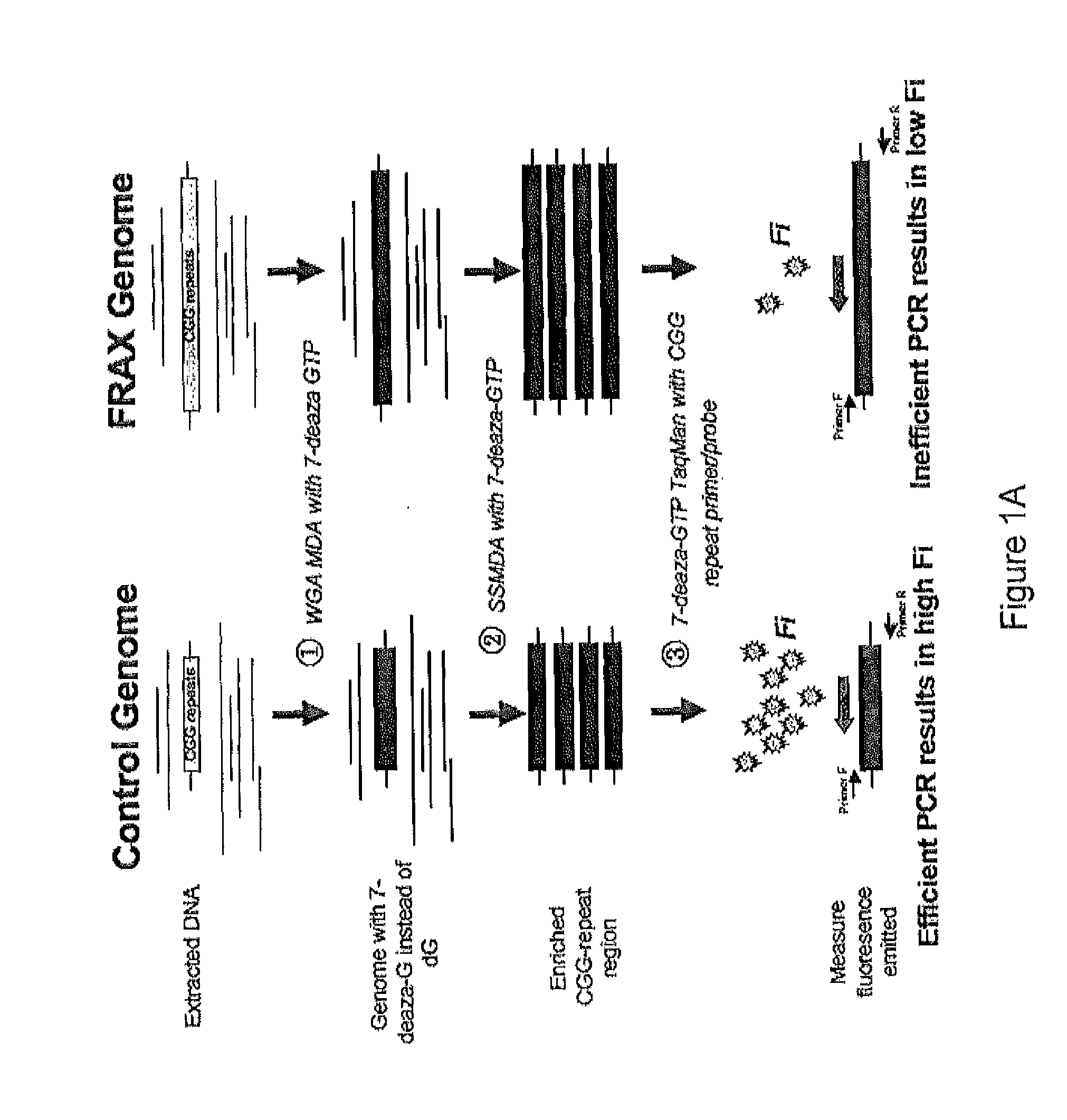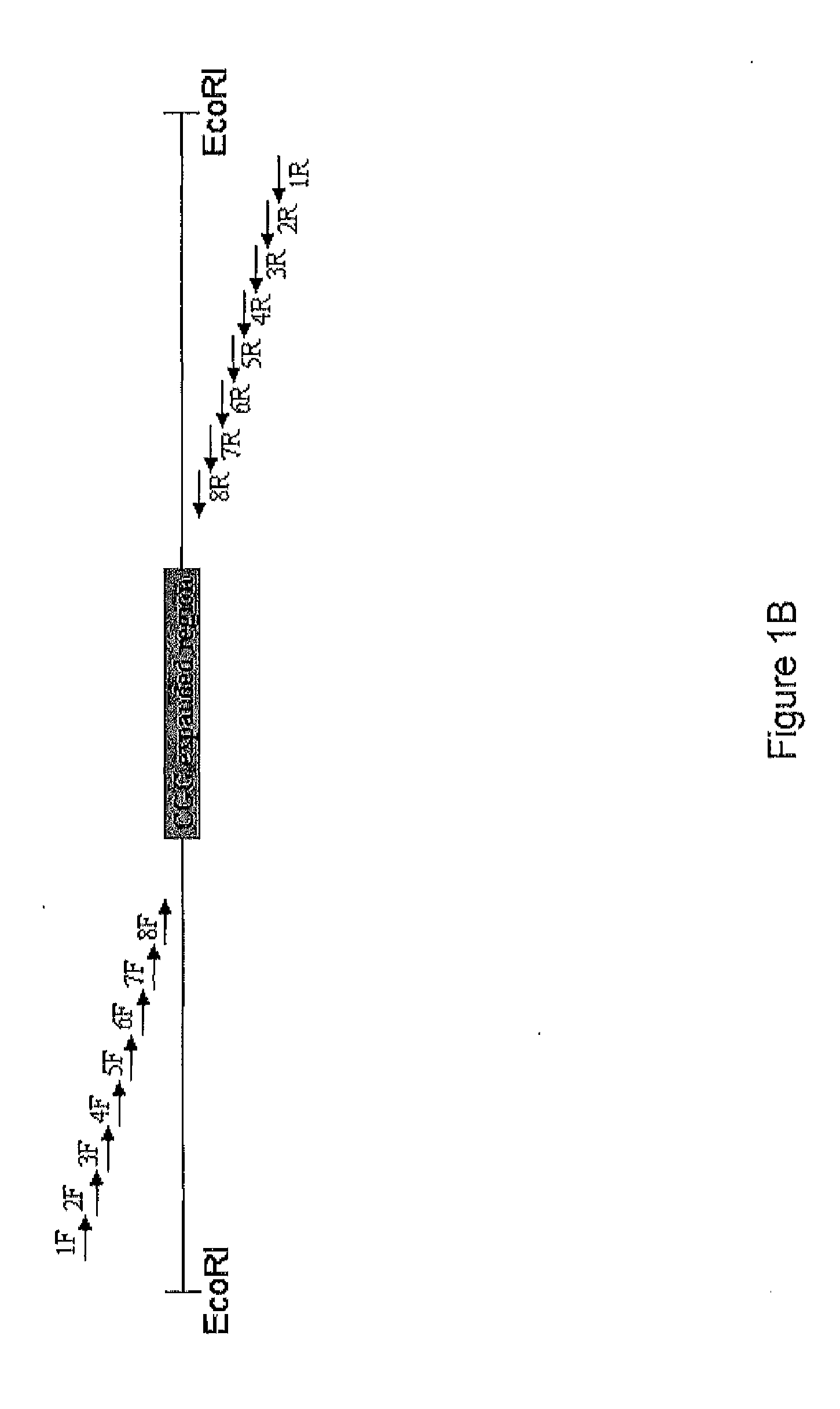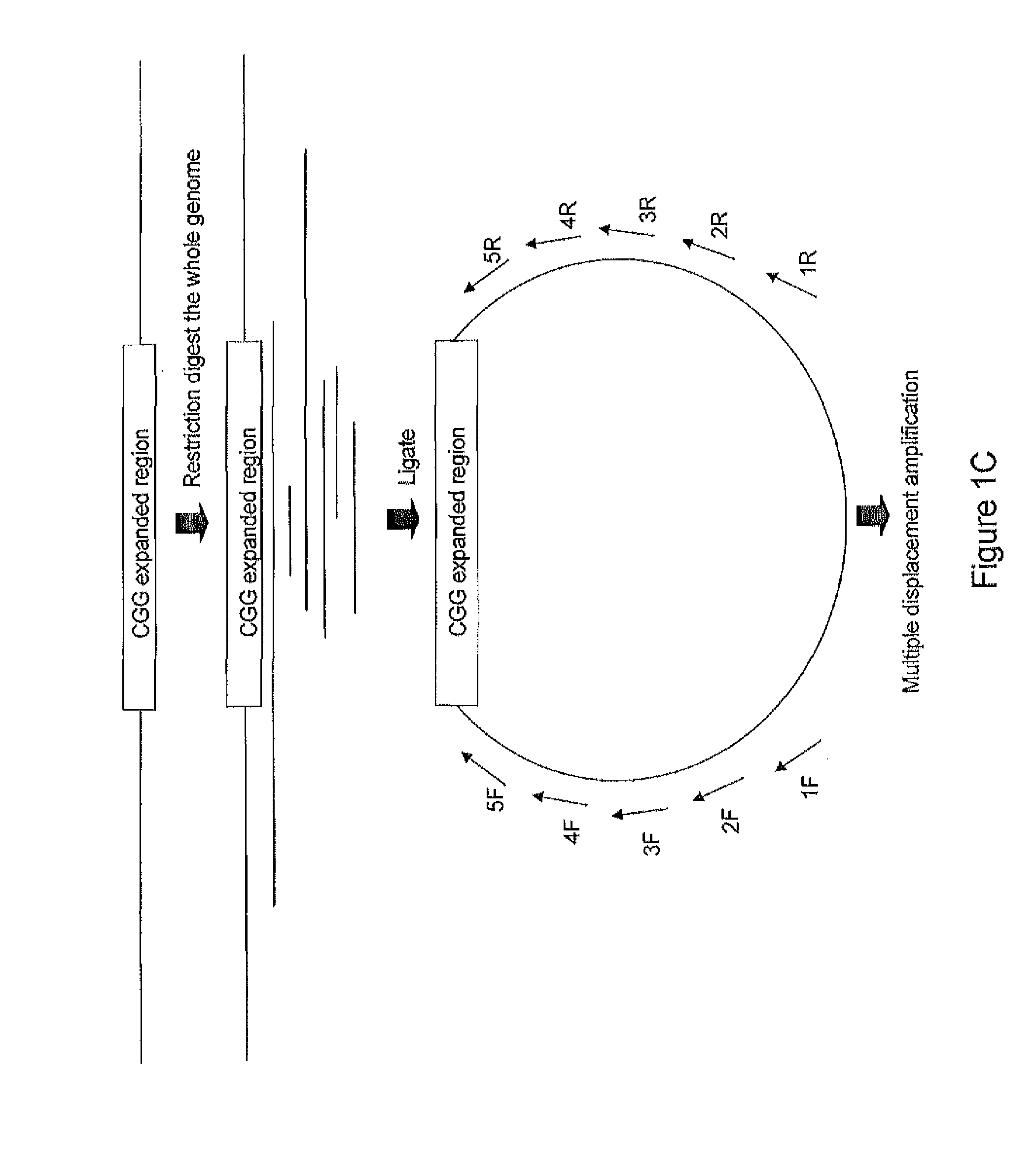Molecular Diagnosis of Fragile X Syndrome Associated with FMR1 Gene
a gene and fragile x technology, applied in the field of trinucleotide repeat disorders, can solve the problems of rnas being translated into excessive amounts of protein, infertility in females, and increase in the number of repeats
- Summary
- Abstract
- Description
- Claims
- Application Information
AI Technical Summary
Benefits of technology
Problems solved by technology
Method used
Image
Examples
experimental examples
[0125]The invention is further described in detail by reference to the following experimental examples. These examples are provided for purposes of illustration only, and are not intended to be limiting unless otherwise specified. Thus, the invention should in no way be construed as being limited to the following examples, but rather, should be construed to encompass any and all variations which become evident as a result of the teaching provided herein.
[0126]At present, it is estimated that more than 100,000 individuals are tested for FRAX per year in the United States. As practitioners become more aware of FRAX, and FRAX testing is expanded to children with autism (1 in 150 children; 300,000 children born per year with autism spectrum), it is anticipated that at least 500,000 individuals would be tested for FRAX if a low cost test is made available.
[0127]Presently, Southern Blot analysis is used to determine the size of the repeat segment and methylation status of the FRAX gene. T...
example 1
Site Specific Multiple Displacement Amplification (SSMDA) to Amplify and Enrich the 5′ Untranslated Region of FRAX Associated FMR1 Gene
[0129]Considering the limitation of prior art methods to assay for FRAX, there is a need to develop a highly accurate, inexpensive, automated, and high-throughput test for diagnosing FRAX. The results presented herein demonstrate the development of a novel approach to screen for FMR1:CGG triplet repeat expansion by way of amplification using Whole Genome Amplification (MDA) and Sequence Specific Amplification with Multiple Displacement Amplification (SSMDA), followed by quantitative assessment of the number of CGG repeats using TaqMan real-time Polymerase Chain Reaction of the SSMDA-enriched 5′ untranslated region of the FMR1 gene. This novel method utilizes, for example, a dGTP nucleotide analog 7-deaza-GTP, which helps alleviate the strong hydrogen bonding of the GC rich region (FIG. 1A). The resulting fluorescence endpoint signal can be measured i...
experiment 2
Using Real-Time SSMDA or PCR to Quantify the Number of Triplet Codon Repeats from the Enriched 5′ Untranslated Region of Fragile X Syndrome Associated FMR1 Gene
[0148]In the above studies, it was observed that individuals with FRAX can be distinguish from controls using a TaqMan real-time PCR assay using a CGG repeat-specific probe. The next set of experiments were designed to determine the optimal conditions for the TaqMan PCR reaction to assess CGG repeat numbers from the SSMDA reaction products.
[0149]After the enrichment of the 5′ untranslated region of FMR1 gene is accomplished by SSMDA, the next step is to quantify the number of CGG repeat found in the amplified region. Two possible protocols may be used. FIG. 2A illustrates the first methods to quantify the number of triplet codon repeats from the 5′ untranslated region of fragile X syndrome associated FMR1 gene. 5′FAM-(CGC)5-TAMRA′3 (SEQ ID NO, 20) or 5′FAM-(CGC)5-MGB′3 (SEQ ID NO, 21) is used as a fluorescent probe to detect ...
PUM
 Login to View More
Login to View More Abstract
Description
Claims
Application Information
 Login to View More
Login to View More - R&D
- Intellectual Property
- Life Sciences
- Materials
- Tech Scout
- Unparalleled Data Quality
- Higher Quality Content
- 60% Fewer Hallucinations
Browse by: Latest US Patents, China's latest patents, Technical Efficacy Thesaurus, Application Domain, Technology Topic, Popular Technical Reports.
© 2025 PatSnap. All rights reserved.Legal|Privacy policy|Modern Slavery Act Transparency Statement|Sitemap|About US| Contact US: help@patsnap.com



